This is how a Doncaster businessman plans to return an RAF Mosquito fighter to the sky
and live on Freeview channel 276
His uncle, a plumber, worked on them, providing amenities on the site. It meant he was able to take John, then a Hungerhill School pupil, to the show, a massive attraction in the borough while the air base was operational.
He had tickets for some of the best views on the base, to see some of the most famous RAF aircraft ever take to the air just up the road from his Edenthorpe home.
Advertisement
Hide AdAdvertisement
Hide AdSome 40 years later, the 52-year-old Lakeside resident has never forgotten those aeroplanes.
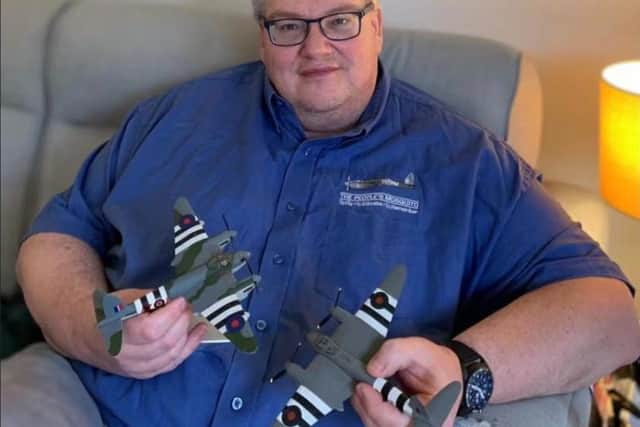

And now he is at the forefront of a battle to bring back a piece of RAF history into the skies.
John is at the heart of a project he hopes will bring a World War Two Mosquito fighter plane back to the sky again for the first time in over 70 years.
If he is successful, it would be the only flying example of the famous aeroplane in the UK.
Advertisement
Hide AdAdvertisement
Hide AdIt’s nearly 10 years since he first floated the idea. Now, after a long campaign, he estimates around 75 per cent of the money needed for the current fundraising target is in place.
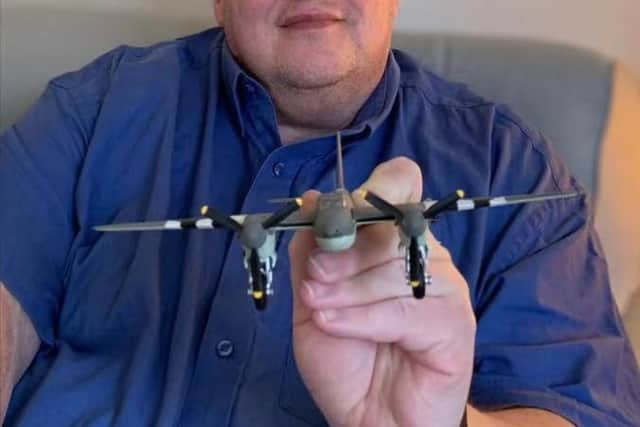

Initially, he put out the idea on Twitter. It caught on, and he received messages of support from all over the world.
He was joined by a core group of enthusiasts and they are now running the project called The People’s Mosquito. Those enthusiasts also include Bill Ramsey, a former co-pilot on the Vulcan who at one stage was based at RAF Finningley.
John is the unpaid chairman and managing director, a position he occupies part time, and fits in around his day job with a global food company.
Advertisement
Hide AdAdvertisement
Hide AdHe’s not new to restoring planes. having previously worked on the restoration of the Imperial War Museum’s Mosquito at Duxford. He is aware of Doncaster’s aviation heritage, close to former RAF bases including Lindholme and Sandtoft, as well as Finningley.
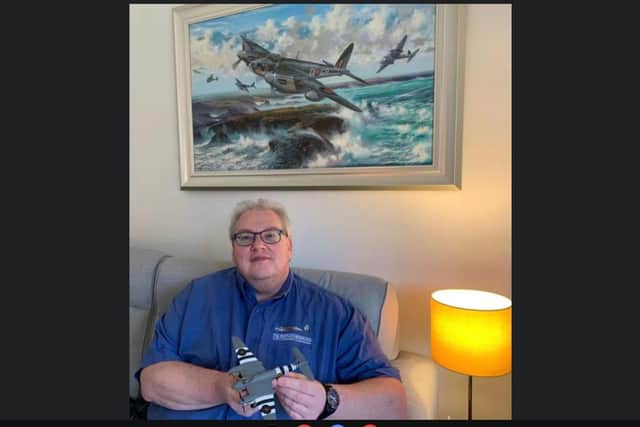

He said: “I was born in Doncaster, and when I was a baby, my parents used to curse the night flying going over from Finningley.”
He added: "I was sat around one Christmas, a few years ago, and I just thought ‘what sort of aircraft would I like to see?’ I’d seen the success they’d had with getting the Vulcan flying out of Doncaster airport. They raised millions to do that.
"I’d also seen that they’d restored a Mosquito in New Zealand, and I just started putting the two things together. I tweeted about it, and soon a few of us had a video call about it. It went from there, and we set up a charity. We all do this in our own time.
Advertisement
Hide AdAdvertisement
Hide Ad"I think the Mosquito is much missed. It's great to see Spitfires and Hurricanes, but Mosquitoes really helped win the war. They were the fastest planes until jets turned up near the end of the war.”
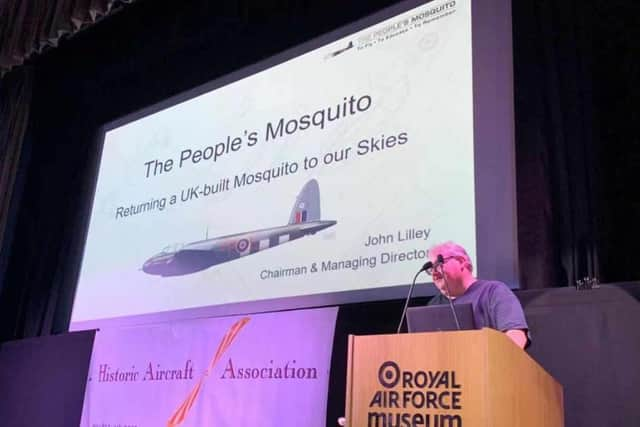

The Mosquito was known as the ‘wooden wonder’. It was made of plywood, with components made by small businesses and craftsmen all over the country.
Among the squadrons that used them was 616 Squadron, set up in Doncaster before the war.
"It was the first multi-role plane,” said John. “It was a fighter and a bomber. It’s contribution's got slightly forgotten. But if you talked to airshows, they’d snap your hands off for one.”
Advertisement
Hide AdAdvertisement
Hide AdThe charity has the remains of a Mosquito that crashed shortly after the war, and plan to base their aircraft on that.
They have also made moulds to make components, and have sourced original parts from several other sources. They have the approval of the Civil Aviation authority to go ahead with their project.
Companies including Airbus have also given support, with Airbus’ Broughton site having made Mosquitoes during the war. Retrotec, an aviation restoration firm in Sussex, is also involved.
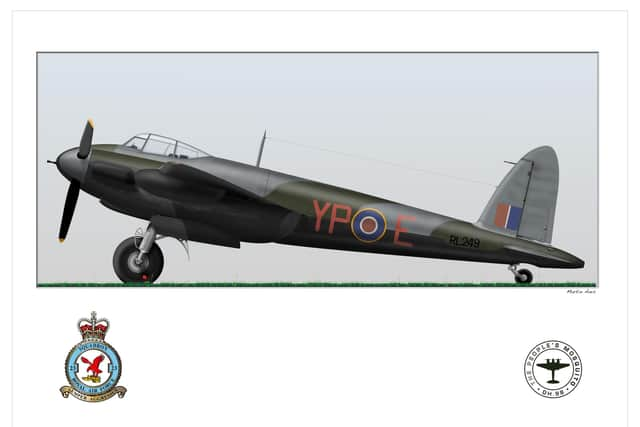

In total, John expects to need between £6million and £8million to get the plane off the ground.
Advertisement
Hide AdAdvertisement
Hide AdIt keeps him busy, and it also impacts on his home life. He admits his hall is cluttered with mosquito parts which he has managed to get hold of from sources around the UK. It also takes up most of his spare time.
"Fortunately, my wife thinks its great,” he said. “She is Chinese, and we met while I was working in Shanghai, She thinks it is great that I’m giving something back, and respecting our forefathers.
"I’m probably spending 30 hours a week on this.”
John does have a family RAF connection – but not to the Mosquito.
While his grandfather was in the Royal Engineers, his great uncle, his dad’s brother, Donald, joined the RAF as aircrew.
Advertisement
Hide AdAdvertisement
Hide AdHe was a radio operator and air gunner on Wellington bombers. He died in April 1940 after his aircraft crashed, with his body recovered from The Wash.
"I wasn’t tempted to create a Wellington,” said John. “It would have been much more difficult. The Mosquito is that one that is missing, and it was such a brilliant aeroplane.
"My hallway looks like an Amazon warehouse because of the parts. I’m quite hands on.
"Parts we can't get elsewhere are all hand made, created one at a time. That’s why it’s so expensive. In the 1940s they made them in bulk.”
Advertisement
Hide AdAdvertisement
Hide AdThere is still work to be done, and fundraising continues. Donations can be made through the charity’s website, https://www.peoplesmosquito.org.uk/.
The group are working to a five year building plan.
When it is completed, it is still not decided where it will be based. They are looking for somewhere with a long runway and fire cover in case of any emergencies, and a central location in the UK. They have had not offers from Doncaster Sheffield Airport.
"We want to get it built first.” said John. “Then we’d like to use it to fly, to educate and to remember.”